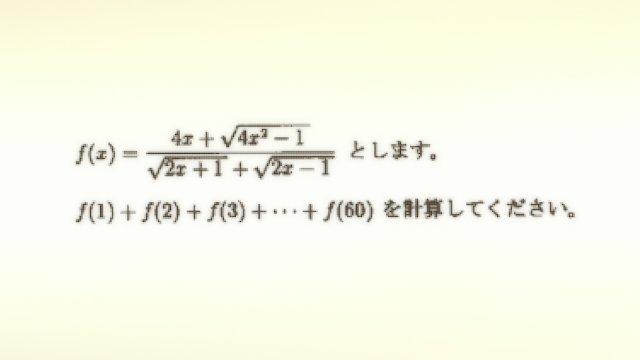The End of Equality
Gandhi didn't actually ever say that as far as I know; though you got to admit it seems kind of plausible? Macros (it's not a "meme" just because of the format) aside, it expresses pretty well the first step in my program to "categorify" the way I teach HS math content. Funnily enough this first step has not much to do with categories themselves directly, but rather with replacing one of the pillars of standard mathematics curriculum. As the title implies the opening move is an attack on the concept of equality.
So what is this actually about? It's not like there's anything wrong with equality per se, but more with the overwhelming importance it is given nowadays (and I'm guessing since forever) in secondary math education. Not only the myriad of different type of equations students are required to learn how to solve, but also the equality of sets, equality of expressions with roots, equality of polynomials, etc... These are all good, but I think the concept that should take precedence is that of equivalence.
~~~~~~~~~~~~~~~~~~~~~~~~~~~~~~~~~~~~~~~~~~~~~~~~~~~
You may be wondering just what is an equivalence and how it differ from the concept of equality. In a few words, I would describe it as equality in a certain context or spicy equality as if you will. When introducing this concept explicitely (more on this particular word later) to my students I like to start by asking them if a 1000 yen bill is "equal" to ten 100 yen coins; to which so far 100% have answered affirmatively. I follow up with questions like: If they are equal, can you burn both or do they have the same color? At this point they scramble to clarify that they meant it as money, which is ofc exactly what I wanted out of this little example.
 |
| 計画通り |
This illustrates pretty well the concept of equivalence. The bill and the coins are only "equal" when it comes to their value as money, but that's only one of the way to classify these objects. If we were to use weight as our classification system, the bill and the coins are certainly not "equal", but the bill and a leaf could be as long as they weigh the same. We could also consider the materials they're made of: if the coins are made out of copper, then they are "equal" to a one ton cube of copper, no matter how different their weight is in this case.
You'll have noticed that I kept using quotation marks for the word equals, since it doesn't quite fits in with the meaning we usually use it for. In tautological terms, only equal things are actually equal! Which is why it's better to say that they're equivalent and to clarify the context in which this happens. The bill is equivalent to the coins as money, the bill is equivalent to the leaf as far as weight goes, the coins are equivalent to the copper cube in the context of the material they're made off, etc...
~~~~~~~~~~~~~~~~~~~~~~~~~~~~~~~~~~~~~~~~~~~~~~~~~~~
If you're familiar with middle/high school math curricula, you can probably notice that it's already full of this type of cases: Similarity and coungruence are equivalences of shapes, $2 \equiv 14[12]$ is just saying 2 and 14 are equivalent mod 12, two sets can be said to be equivalent if one can create a bijection between them, etc... None of which define equality. What's more, if you happen to be a math teacher yourself, you can probably go even further beyond and say you've been doing stuff like this all along! The all-so-popular WODB (which one doesn't belong) games among the #MTBos and #iteachmath crowd take advantage of precisely this concept: there are several ways to exclude one of the objects based on what type of equivalence you're working under.
 |
| WODB? More examples here. |
With the above said, it may seem that we already do a decent job with this business of equivalences, so what's my problem? The main issue I see is that we don't make this concept as explicit as it should be, and we certainly don't give it the importance it should have, not by far. This is the first change I made to how I teach, and while I'm only applying my Instrumentality Categorification Project to that very special class I mentioned in my opening post, this equivalence issue is something I started to do with all my classes.
Not only do I put emphasis on noticing all these cases of equivalences, but I have started actively teaching about equivalence relations, classes, and partitions of sets to even my youngest grades (high school freshmen). While it's something extra on top of the curriculum topics, and it certainy requires more time and attention than practicing how to solve quadratic equations, the notions are, at their core, just a formalization of the observations I've mentioned before and that students are already familiar with in some intrinsic level.
So far it has been quite succesful in the three classes I've tried it with, through methods like the ones mentioned before. Because of the familiarity that comes from exposure to the examples they know about, student's didn't struggle as much as I imagined they would. What really made it stick though is the presence of equivalences in virtually every new topic introduced since then and making the connection explicit every time. At first I pointed them out, but by now my students have started recognizing them on their own, and it has become some sort of competition among some of them to recognize the equivalence relation and classes in whatever topic we're studying. A recent example being parallel lines in the context of linear functions. It was quite a nice feeling to see them making that connection!
This last point is why I decided to use equivalence relations as the start of my overall goal of showing some overarching theme that runs through all the topics in the curriculum. All by itself, the concept of equivalence already gets the job started as seen in this post. However, once you get into more advanced topics like functions (in general), polynomials, (geometric) vectors, etc... defining common structures requires many other concepts and a more complete language in some sense. Spoiler alert: category theory. In fact, I'm not the first one to notice the need for an overhaul of the importance of equal vs equivalent in math in connection to category theory, as this article from Quanta Magazine very nicely describes.
Of course, equivalences are more than just as stepping stone in my project, since they are present within categories themselves. We can already mention that of isomorphisms within a category; since they form an equivalence relation between the objects. This may seem like a bunch of jargon, but it's just a generalization of the example of bijections between sets forming an equivalence relation, as mentioned above. My hope is that having introduced equivalences earlier, and in a much more approachable/user-friendly way, would make the transition to category theory concepts much smoother. This concepts, in turn, will allow us to derive results and see more complex "coincidences" further along the line. I already have some information to share on how that's going, but that'll have to wait for upcoming posts to find out!
And with that little teaser, let's finish for now!




Comments
Post a Comment